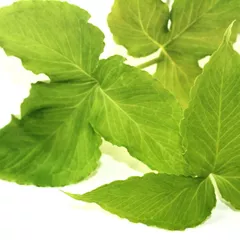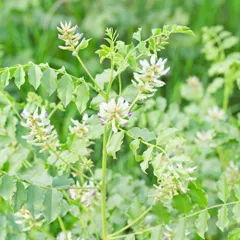Bronchiolitis according to Chinese Medicine
The information provided here is not a replacement for a doctor. You shouldn't use it for the purpose of self-diagnosing or self-medicating but rather so you can have a more informed discussion with a professional TCM practitioner.
In Chinese Medicine, bronchiolitis is sometimes associated with Wind-Cold invading the Interior with Phelgm-Heat, a so-called "patterns of disharmony". Chinese Medicine sees the body as a system, not a sum of isolated parts. A "pattern" is when the system's harmony is disrupted. It is not equivalent to the Western concept of "disease" because both concepts arise from totally different ways of seeing the human body.
To understand whether someone's bronchiolitis might be caused by the pattern Wind-Cold invading the Interior with Phelgm-Heat, one needs to look for signs and symptoms associated with the pattern beyond what one might typically experience from bronchiolitis alone. Indeed if bronchiolitis is caused by Wind-Cold invading the Interior with Phelgm-Heat, patients also experience symptoms such as labored breathing and coughing and wheezing with copious thick and yellow sputum. Similarly, patients with Wind-Cold invading the Interior with Phelgm-Heat typically exhibit rapid (Shu) or slippery (Hua) pulses as well as a tongue with yellow coating.
We've listed below a more detailed description of Wind-Cold invading the Interior with Phelgm-Heat so that you can have a better understanding of where bronchiolitis might find its root according to Chinese Medicine.
Once identified, patterns are often treated using herbal formulas. Drinking herbal infusions is the most common remedy in Chinese Medicine, together with acupuncture. Here we detail below two formulas that can help treat Wind-Cold invading the Interior with Phelgm-Heat.
Wind-Cold invading the Interior with Phelgm-Heat, a "pattern of disharmony" associated with bronchiolitis

Ginkgo Nuts (Bai Guo) is the key herb for Ding Chuan Tang, a formula used for Wind-Cold invading the Interior with Phelgm-Heat
Wind-Cold invading the Interior with Phelgm-Heat
Pulse type(s): Rapid (Shu), Slippery (Hua)
Tongue coating: Yellow coating
Recommended herbal formula: Ding Chuan Tang
Symptoms: Labored breathing Coughing and wheezing with copious thick and yellow sputum
Bronchiolitis might be due to Wind-Cold invading the Interior with Phelgm-Heat if the condition is paired with typical pattern symptoms such as labored breathing and coughing and wheezing with copious thick and yellow sputum. Similarly, patients with Wind-Cold invading the Interior with Phelgm-Heat typically exhibit rapid (Shu) or slippery (Hua) pulses as well as a tongue with yellow coating.
Read more about Wind-Cold invading the Interior with Phelgm-Heat here
The two herbal formulas that might help with bronchiolitis



The top herbs in Ding Chuan Tang are Ginkgo Nuts (Bai Guo), Ephedra (Ma Huang) and Mulberry Bark (Sang Bai Pi)
Ding Chuan Tang
Source date: 1550 AD
Number of ingredients: 9 herbs
Key actions: Clears Lung Heat. Expectorant for asthma.
Why might Ding Chuan Tang help with bronchiolitis?
Because it is a formula often recommended to help treat Wind-Cold invading the Interior with Phelgm-Heat, a pattern sometimes associated with bronchiolitis. If it looks like you might suffer from Wind-Cold invading the Interior with Phelgm-Heat, this formula might help (although please seek confirmation with a professional practitioner beforehand).



The top herbs in Wu Ji San are Ephedra (Ma Huang), Angelica Roots (Bai Zhi) and Poria-Cocos Mushrooms (Fu Ling)
Wu Ji San
Source date: 846 AD
Number of ingredients: 15 herbs
Key actions: Releases the Exterior. Warms the Interior. Smoothes the flow of Qi. Transforms Phlegm. Invigorates the Blood. Reduces Stagnation.
Why might Wu Ji San help with bronchiolitis?
Because it is a formula often recommended to help treat , a pattern sometimes associated with bronchiolitis. If it looks like you might suffer from , this formula might help (although please seek confirmation with a professional practitioner beforehand).
Symptoms related to bronchiolitis
Labored breathing Coughing and wheezing with copious thick and yellow sputum




